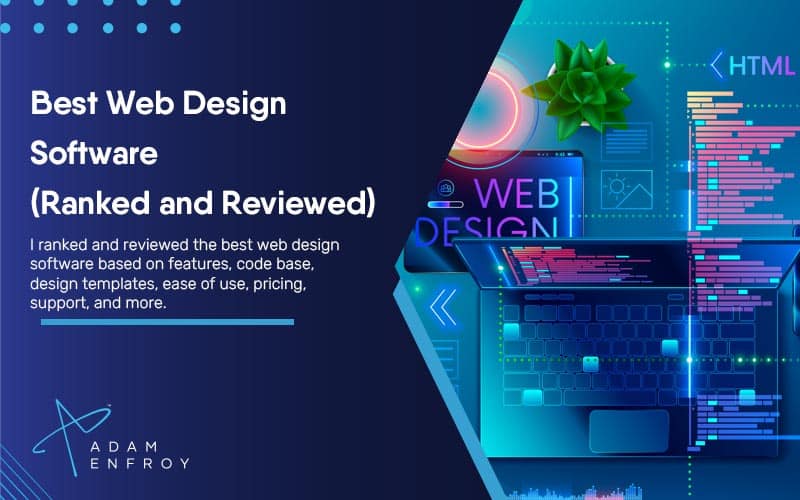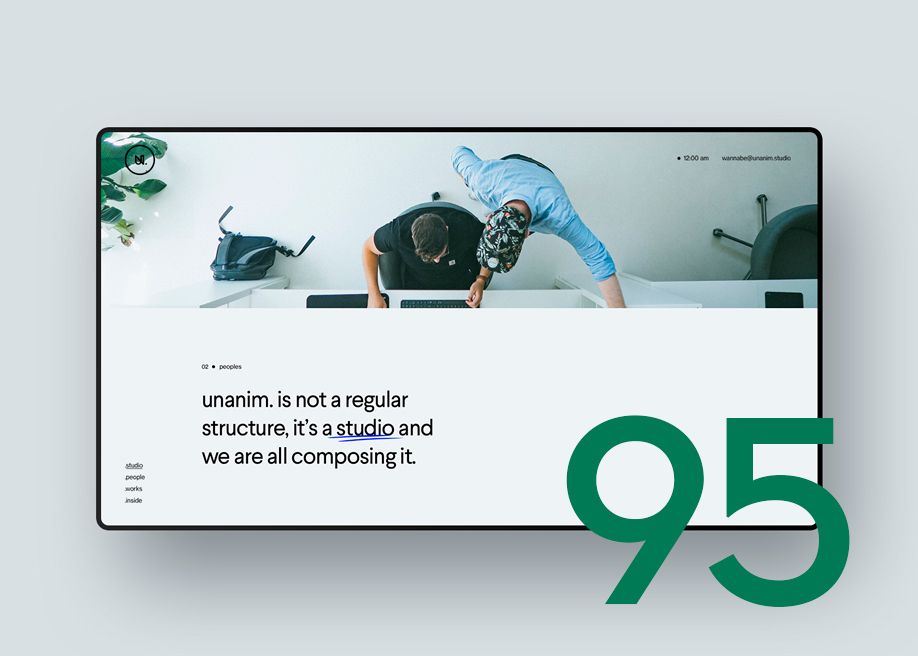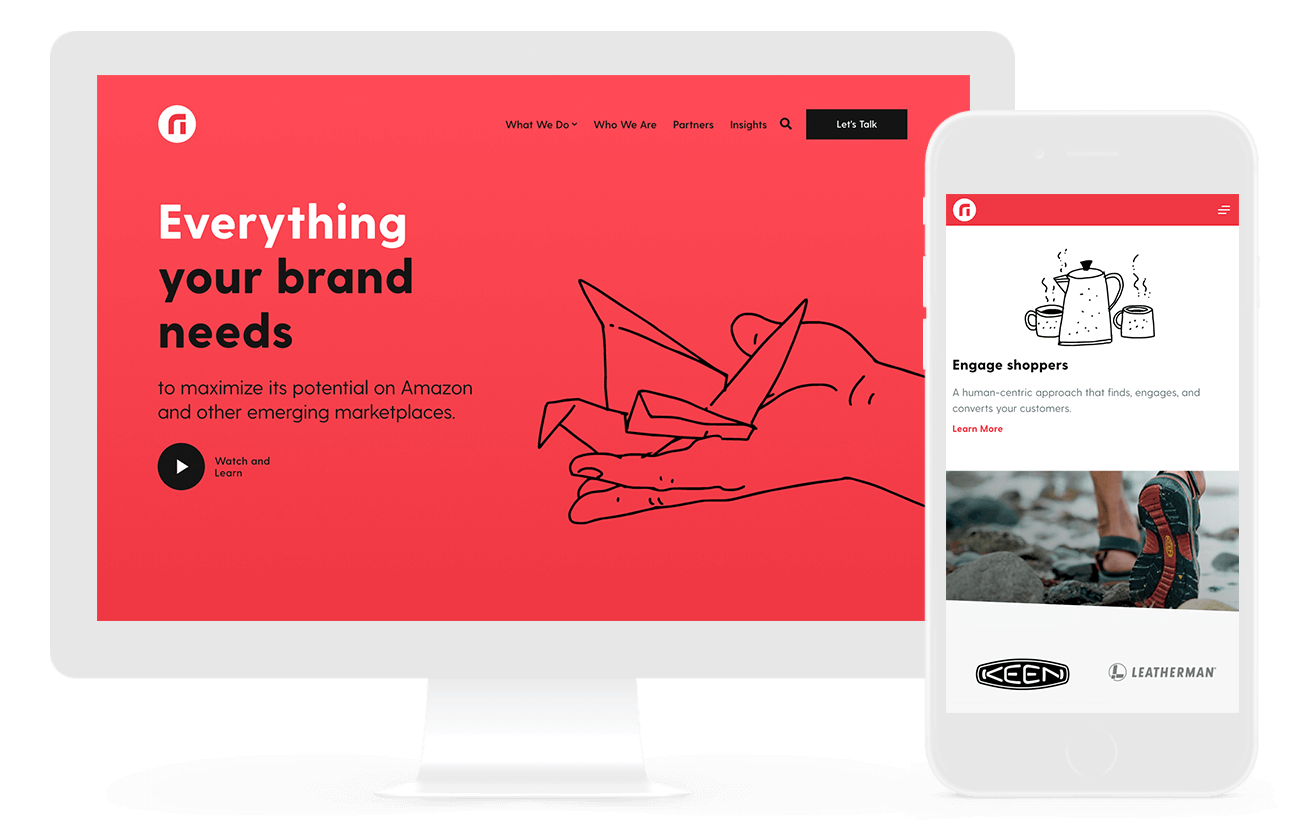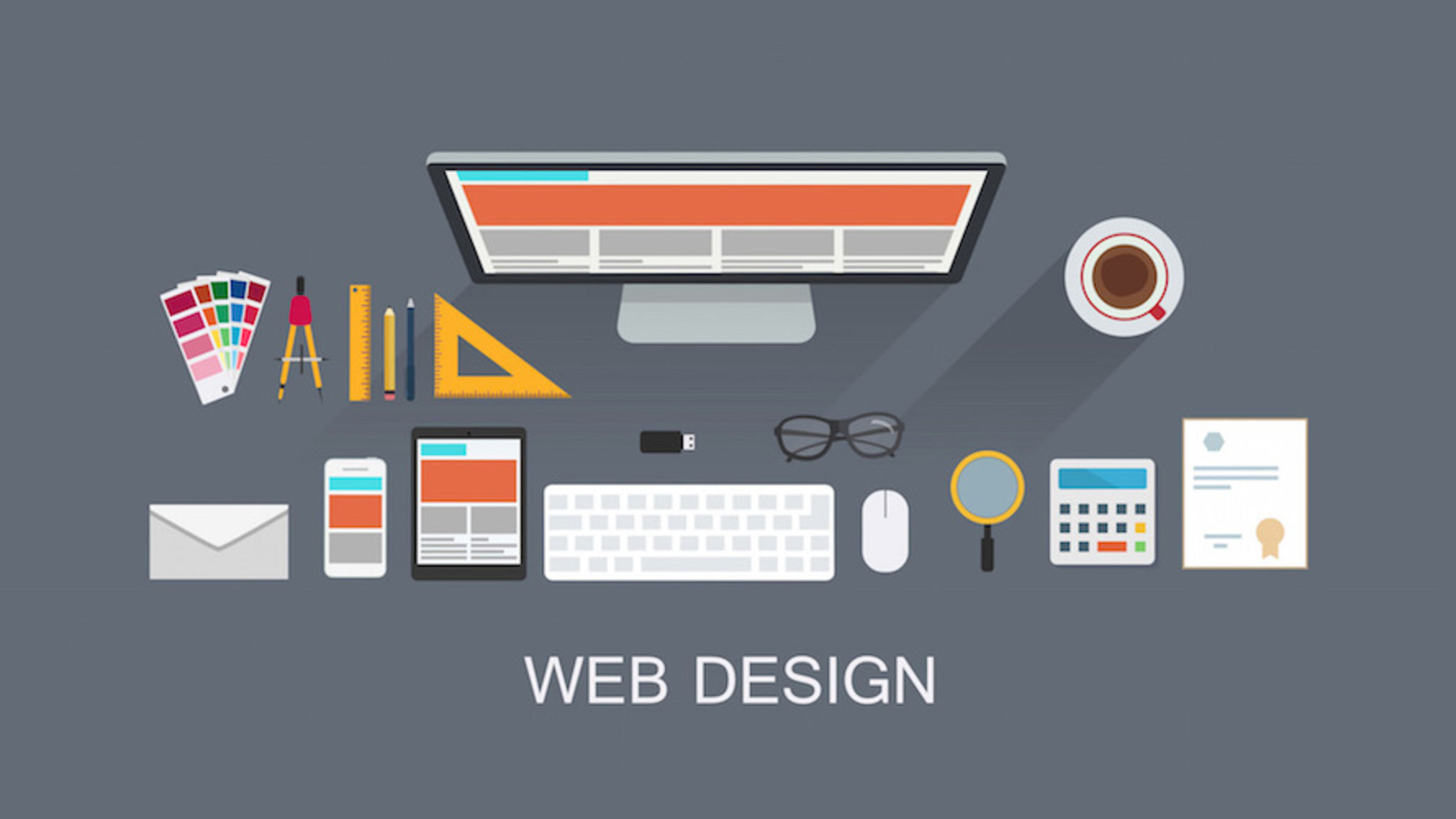All Categories
Featured
Table of Contents
- – Web Design Courses & Tutorials - Codecademy Ti...
- – Web Design Services - Verizon Small Business ...
- – What Is Web Design? A Comprehensive Guide - W...
- – Siteinspire - Web Design Inspiration Tips and...
- – Web Design Certificate - Web Development Cert...
- – Wicky Design: Philadelphia Web Design Tips an...
- – Web Design Software By Xara Tips and Tricks:
- – Powderkeg: Web Design Madison, Wi Tips and T...
- – Pueblo Web Design Tips and Tricks:
- – Website Design - Best Ecommerce Web Design B...
- – Lifted Logic: Web Design In Kansas City - Se...
Web Design Courses & Tutorials - Codecademy Tips and Tricks:
Quick summary Functionality and the utility, not the visual design, identify the success or failure of a website. Given that the visitor of the page is the only person who clicks the mouse and for that reason chooses whatever, user-centric style has developed as a basic approach for successful and profit-oriented website design - web design frederick md.
and the utility, not the visual design, identify the success or failure of a website. Given that the visitor of the page is the only individual who clicks the mouse and for that reason decides everything, user-centric style has actually become a standard approach for successful and profit-oriented web design. If users can't utilize a function, it might as well not exist.
g. where the search box should be positioned) as it has currently been done in a number of posts; instead we focus on the methods which, utilized correctly, can lead to more advanced style choices and simplify the procedure of viewing presented info. Please see that you might be thinking about the usability-related short articles we have actually published prior to: Principles Of Excellent Site Design And Efficient Web Style Guidelines, In order to use the concepts properly we initially require to comprehend how users communicate with sites, how they believe and what are the basic patterns of users' behavior.
Web Design Services - Verizon Small Business Essentials Tips and Tricks:
Visitors glance at each new page, scan a few of the text, and click the very first link that captures their interest or vaguely looks like the important things they're looking for. There are big parts of the page they don't even look at. Most users look for something interesting (or helpful) and clickable; as quickly as some promising candidates are discovered, users click.
If a page offers users with top quality material, they are prepared to compromise the content with ads and the style of the website. This is the reason why not-that-well-designed websites with top quality content acquire a great deal of traffic over years. Content is more crucial than the style which supports it.

Users don't check out, they scan. Notification how "hot" locations abrupt in the middle of sentences. This is typical for the scanning process. Extremely easy concept: If a site isn't able to fulfill users' expectations, then designer stopped working to get his task done properly and the business loses cash. The higher is the cognitive load and the less intuitive is the navigation, the more willing are users to leave the site and search for alternatives.
What Is Web Design? A Comprehensive Guide - Wix.com Tips and Tricks:
Neither do they scan webpage in a direct style, going sequentially from one site section to another one. Instead users satisfice; they select the very first sensible alternative. As quickly as they find a link that looks like it might cause the objective, there is an excellent possibility that it will be immediately clicked.
It does not matter to us if we understand how things work, as long as we can utilize them. If your audience is going to act like you're developing signboard, then style terrific signboards." Users wish to be able to manage their browser and rely on the consistent information discussion throughout the site.
If the navigation and website architecture aren't intuitive, the variety of question marks grows and makes it harder for users to comprehend how the system works and how to obtain from point A to point B. A clear structure, moderate visual ideas and quickly identifiable links can assist users to find their course to their objective.
Siteinspire - Web Design Inspiration Tips and Tricks:

claims to be "beyond channels, beyond products, beyond distribution". What does it suggest? Given that users tend to explore websites according to the "F"-pattern, these three statements would be the very first elements users will see on the page once it is filled. The design itself is basic and intuitive, to comprehend what the page is about the user needs to browse for the answer.
When you've achieved this, you can communicate why the system works and how users can take advantage of it. People will not use your web website if they can't discover their method around it. 2. Do Not Waste Users' Perseverance, In every job when you are going to use your visitors some service or tool, attempt to keep your user requirements minimal.
Novice visitors are willing to, not filling long web kinds for an account they might never utilize in the future. Let users check out the site and find your services without requiring them into sharing personal information. It's not reasonable to force users to enter an e-mail address to test the function.
Web Design Certificate - Web Development Certificate Program Tips and Tricks:
Stikkit is an ideal example for an user-friendly service which requires practically nothing from the visitor which is inconspicuous and reassuring. Which's what you want your users to feel on your web website. Obviously, Mite needs more. However the registration can be done in less than 30 seconds as the form has horizontal orientation, the user doesn't even need to scroll the page.
A user registration alone is adequate of an obstacle to user navigation to cut down on incoming traffic. Manage To Focus Users' Attention, As websites provide both static and vibrant content, some elements of the user interface draw in attention more than others do.
Focusing users' attention to specific locations of the website with a moderate use of visual elements can help your visitors to receive from point A to point B without thinking of how it really is supposed to be done. The less question marks visitors have, the they have and the more trust they can establish towards the business the site represents.
Wicky Design: Philadelphia Web Design Tips and Tricks:
4. Pursue Feature Direct exposure, Modern web styles are generally criticized due to their technique of guiding users with aesthetically appealing 1-2-3-done-steps, big buttons with visual impacts and so on. From the design point of view these aspects really aren't a bad thing. On the contrary, such as they lead the visitors through the website content in a very basic and easy to use way.
The site has 9 primary navigation choices which show up at the very first look. The option of colors may be too light. is an essential concept of successful interface design. It does not really matter how this is achieved. What matters is that the content is well-understood and visitors feel comfortable with the way they communicate with the system.
Instead a price: simply what visitors are looking for. An ideal solution for efficient writing is touse short and succinct phrases (come to the point as quickly as possible), usage scannable layout (categorize the material, utilize numerous heading levels, utilize visual elements and bulleted lists which break the circulation of uniform text blocks), use plain and objective language (a promotion does not require to sound like advertisement; give your users some reasonable and objective reason why they need to use your service or stay on your site)6.
Web Design Software By Xara Tips and Tricks:
Users are hardly ever on a website to take pleasure in the design; moreover, in many cases they are searching for the info in spite of the design - web design frederick md. Pursue simplicity instead of complexity. From the visitors' point of view, the very best site design is a pure text, with no ads or further content obstructs matching precisely the question visitors used or the content they've been looking for.
Finch plainly presents the info about the website and gives visitors an option of choices without overcrowding them with unnecessary material. 7. Don't Hesitate Of The White Space, Really it's actually difficult to overstate the importance of white area. Not just does it help to for the visitors, but it makes it possible to perceive the details provided on the screen.
Complex structures are harder to read, scan, evaluate and work with. If you have the choice in between separating 2 design sections by a noticeable line or by some whitespace, it's generally better to use the whitespace solution. (Simon's Law): the much better you manage to supply users with a sense of visual hierarchy, the easier your content will be to view.
Powderkeg: Web Design Madison, Wi Tips and Tricks:
The same conventions and guidelines must be used to all elements.: do the most with the least quantity of cues and visual elements. Clarity: all components ought to be created so their significance is not uncertain.
Conventions Are Our Friends, Traditional design of site components does not result in an uninteresting web website. It would be an use headache if all sites had various visual presentation of RSS-feeds.
comprehend what they're anticipating from a website navigation, text structure, search positioning etc. A normal example from use sessions is to equate the page in Japanese (assuming your web users do not understand Japanese, e. g. with Babelfish) and supply your usability testers with a task to discover something in the page of different language.
Pueblo Web Design Tips and Tricks:
Steve Krug suggests that it's much better to, but make the most of conventions when you don't. 10. Test Early, Test Typically, This so-called TETO-principle ought to be applied to every web style task as use tests often offer into significant problems and concerns associated with a provided design. Test not far too late, not too little and not for the wrong factors.
Some essential indicate remember: according to Steve Krug, and screening one user early in the job is better than screening 50 near completion. Accoring to Boehm's very first law, mistakes are most frequent throughout requirements and design activities and are the more expensive the later they are eliminated.
That means that you create something, test it, repair it and then test it again. There may be problems which haven't been found during the very first round as users were practically blocked by other issues.
Website Design - Best Ecommerce Web Design By Shopify Tips and Tricks:

This holds for designers. After you have actually worked on a website for couple of weeks, you can't observe it from a fresh point of view any longer. You know how it is built and for that reason you understand precisely how it works you have the wisdom independent testers and visitors of your site would not have.
It can be linked to other locations such as graphic style, user experience, and multimedia arts, however is more appropriately seen from a technological viewpoint. It has actually become a large part of individuals's daily lives. It is tough to envision the Web without animated graphics, various designs of typography, background, videos and music.

Throughout 1991 to 1993 the World Wide Web was born. Text-only pages could be viewed using an easy line-mode web browser. There had been no integrated approach to graphic design components such as images or sounds.
Lifted Logic: Web Design In Kansas City - Seo - Website ... Tips and Tricks:
The W3C was produced in October 1994 to "lead the Web to its full potential by developing typical protocols that promote its evolution and guarantee its interoperability." This dissuaded any one business from monopolizing a propriety internet browser and shows language, which might have altered the result of the Internet as a whole.
As this has actually occurred the innovation of the web has actually also moved on. There have likewise been considerable changes in the way people utilize and access the web, and this has changed how websites are developed.
Learn more about Lovell Media Group LLC or TrainACETable of Contents
- – Web Design Courses & Tutorials - Codecademy Ti...
- – Web Design Services - Verizon Small Business ...
- – What Is Web Design? A Comprehensive Guide - W...
- – Siteinspire - Web Design Inspiration Tips and...
- – Web Design Certificate - Web Development Cert...
- – Wicky Design: Philadelphia Web Design Tips an...
- – Web Design Software By Xara Tips and Tricks:
- – Powderkeg: Web Design Madison, Wi Tips and T...
- – Pueblo Web Design Tips and Tricks:
- – Website Design - Best Ecommerce Web Design B...
- – Lifted Logic: Web Design In Kansas City - Se...
Latest Posts
Wicky Design: Philadelphia Web Design Tips and Tricks:
Penner Home - Durham Web Design - Penner Web Design ... Tips and Tricks:
Freelance Website Designer Frederick MD
More
Latest Posts
Wicky Design: Philadelphia Web Design Tips and Tricks:
Penner Home - Durham Web Design - Penner Web Design ... Tips and Tricks:
Freelance Website Designer Frederick MD